Identifying knee injury. 5 Most Common Knee Injuries: Identifying and Understanding Knee Pain
What are the 5 most common knee injuries. How to identify knee injury symptoms. What is the anatomy of the knee. How do different knee structures contribute to joint stability. What causes knee fractures, dislocations, ligament injuries, and meniscus tears.
Understanding the Anatomy of the Knee
The knee, being the largest joint in the human body, is a complex structure comprising various components that work in harmony to facilitate movement and provide stability. To comprehend knee injuries better, it’s crucial to have a basic understanding of its anatomy.
Bones of the Knee
Three main bones form the knee joint:
- Femur (thighbone)
- Tibia (shinbone)
- Patella (kneecap)
These bones converge to create the knee joint, allowing for smooth articulation and movement.
Cartilage and Meniscus
Articular cartilage covers the ends of the femur and tibia, as well as the back of the patella. This slippery surface enables the bones to glide smoothly against each other during knee flexion and extension. The meniscus, a tough, rubbery, wedge-shaped cartilage, sits between the femur and tibia, acting as a shock absorber and cushioning the joint.
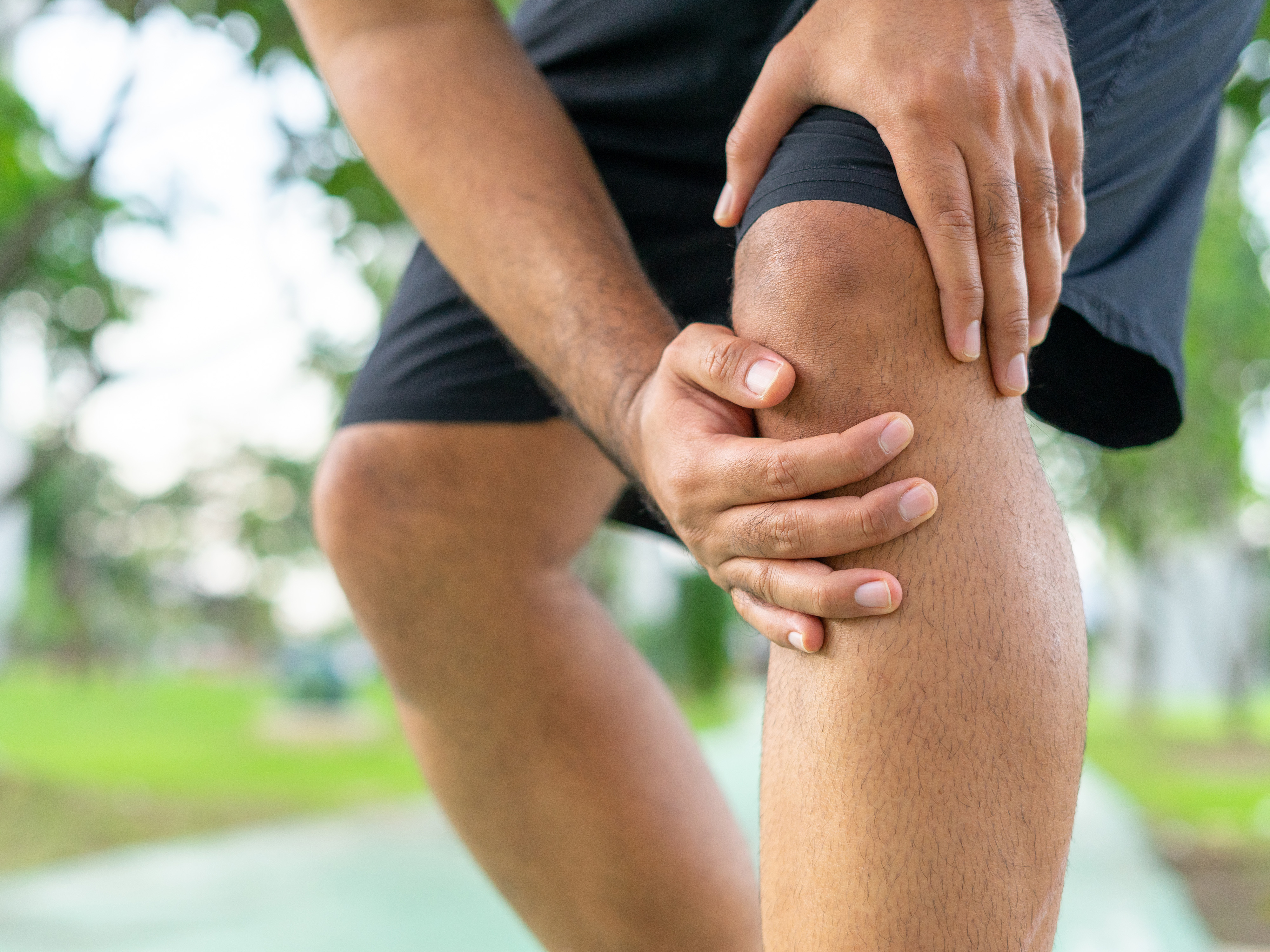
Ligaments and Tendons
Four main ligaments stabilize the knee joint:
- Medial collateral ligament (MCL)
- Lateral collateral ligament (LCL)
- Anterior cruciate ligament (ACL)
- Posterior cruciate ligament (PCL)
The collateral ligaments control sideways movement, while the cruciate ligaments manage back-and-forth motion. Tendons, such as the quadriceps tendon and patellar tendon, connect muscles to bones, enabling movement and providing additional support.
Knee Fractures: When the Kneecap Takes the Hit
Knee fractures, particularly those involving the patella, are serious injuries that can significantly impact mobility. The kneecap serves as a protective shield for the underlying joint structures, making it vulnerable to fractures during falls or direct impacts.
Causes of Knee Fractures
Common causes of knee fractures include:
- Falls onto a hard surface
- Direct blows to the knee
- High-impact collisions in sports or accidents
Symptoms and Treatment
How can you identify a knee fracture? Key symptoms include:

- Severe pain and swelling
- Difficulty or inability to straighten the knee
- Visible deformity of the kneecap
- Bruising and discoloration
Treatment for knee fractures typically involves immobilization to allow proper healing. In more severe cases, surgical intervention may be necessary to repair the fractured bone and restore knee function.
Knee Dislocations: When Bones Shift Out of Place
Knee dislocations occur when the bones that form the knee joint are forced out of their normal positions. This serious injury often results from high-energy trauma and can potentially damage surrounding blood vessels and nerves.
Mechanisms of Knee Dislocation
What causes knee dislocations? Common mechanisms include:
- Motor vehicle accidents
- Falls from significant heights
- High-impact sports injuries
Self-Reducing vs. Persistent Dislocations
In some cases, a dislocated knee may spontaneously reduce (return to its normal position). However, persistent dislocations require medical intervention. A healthcare professional will carefully manipulate the joint to restore proper alignment, often followed by imaging studies to assess for associated injuries.
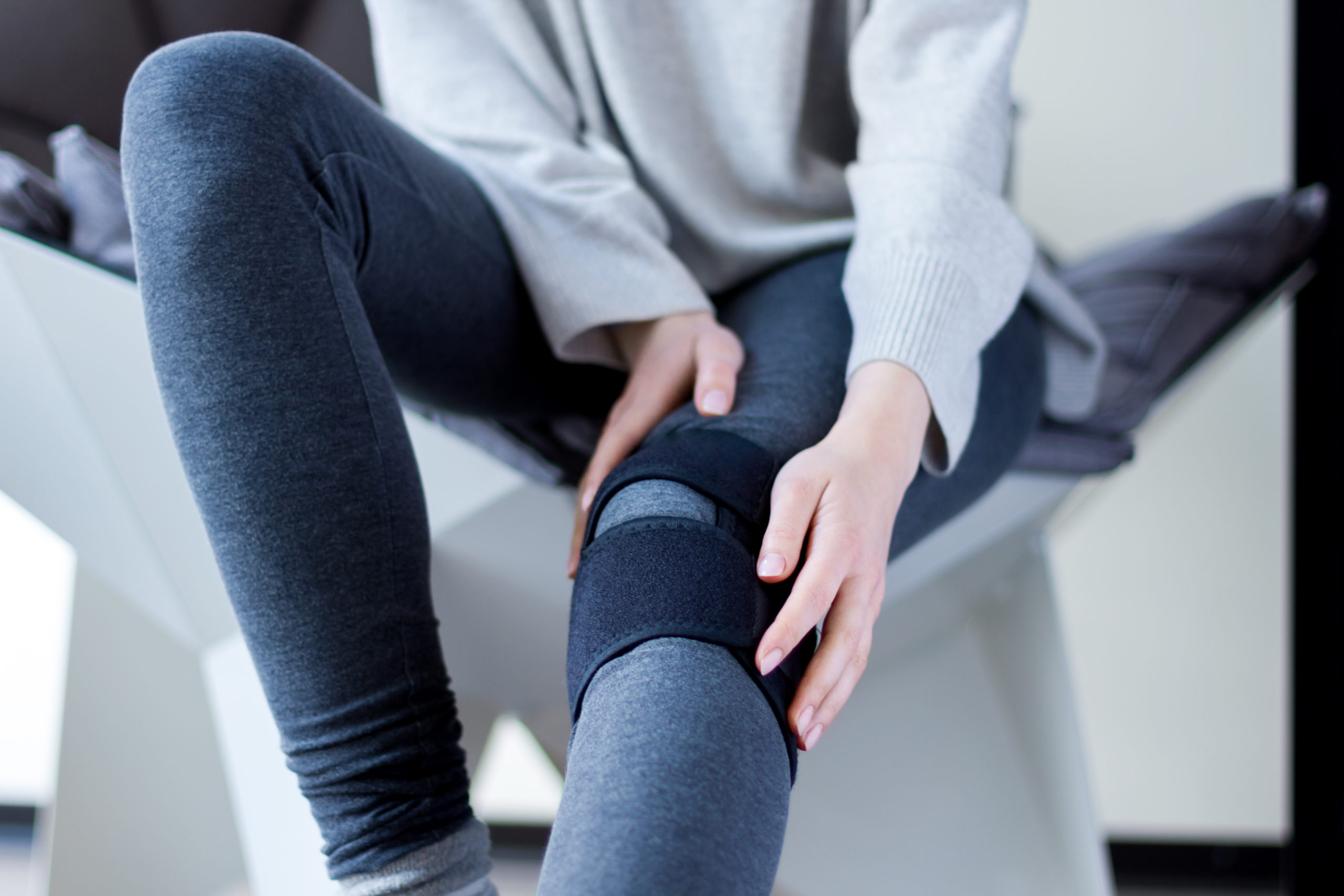
Ligament Injuries: When Stability is Compromised
Ligament injuries are among the most common knee injuries, especially in athletes. These injuries occur when the knee is subjected to forces that exceed the ligaments’ capacity to maintain joint stability.
Types of Ligament Injuries
The four main ligaments of the knee are susceptible to injury:
- ACL (Anterior Cruciate Ligament) injuries
- PCL (Posterior Cruciate Ligament) injuries
- MCL (Medial Collateral Ligament) injuries
- LCL (Lateral Collateral Ligament) injuries
Grading Ligament Injuries
How are ligament injuries classified? They are typically graded based on severity:
- Grade I: Mild sprain with slight stretching and micro-tearing of ligament fibers
- Grade II: Moderate sprain with partial tearing of the ligament
- Grade III: Severe sprain with complete ligament tear
Symptoms and Treatment Approaches
Common symptoms of ligament injuries include:
- Pain and swelling
- Instability or a feeling of the knee “giving way”
- Limited range of motion
- Bruising (especially in higher-grade injuries)
Treatment varies depending on the specific ligament injured and the severity of the injury. Options may include:
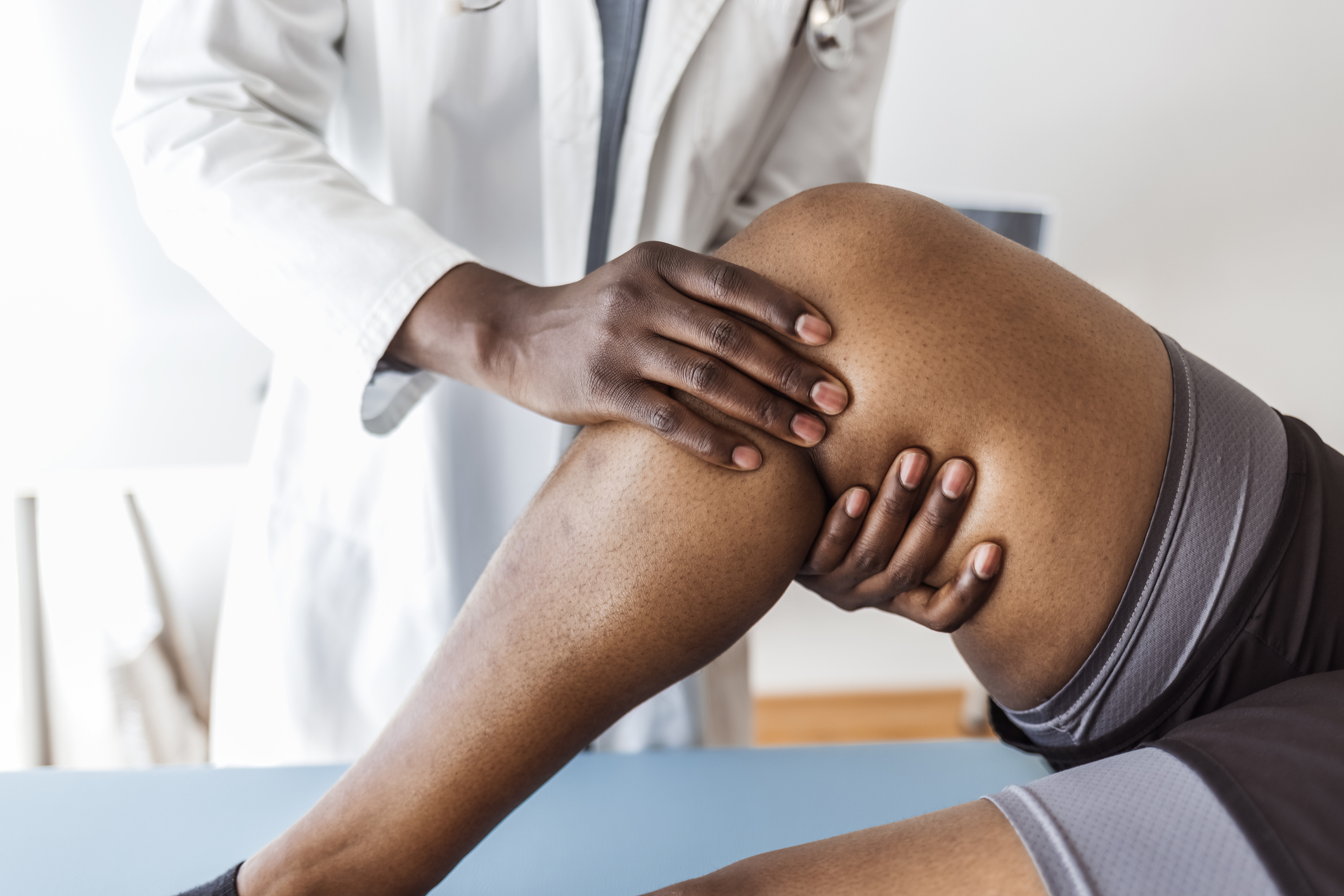
- Rest, ice, compression, and elevation (RICE)
- Physical therapy and rehabilitation exercises
- Bracing or supportive devices
- Surgical reconstruction for severe tears or in cases where conservative treatment fails
Meniscus Tears: When the Shock Absorber Fails
Meniscus tears are common knee injuries that can occur in both athletes and non-athletes. The meniscus, acting as a cushion between the femur and tibia, can be damaged through traumatic injuries or degenerative processes.
Mechanisms of Meniscus Tears
How do meniscus tears typically occur? Common causes include:
- Sudden twisting or rotation of the knee
- Deep squatting or heavy lifting
- Degenerative changes associated with aging
Types of Meniscus Tears
Meniscus tears can be categorized based on their pattern and location:
- Radial tears
- Horizontal tears
- Longitudinal tears
- Bucket-handle tears
- Complex or degenerative tears
Symptoms and Diagnostic Approaches
What are the signs of a meniscus tear? Common symptoms include:
- Pain, especially when twisting or rotating the knee
- Swelling and stiffness
- Catching or locking sensation in the knee
- Difficulty fully extending the knee
Diagnosis typically involves a combination of physical examination, patient history, and imaging studies such as MRI to confirm the presence and extent of the tear.

Overuse Injuries: When Repetitive Stress Takes Its Toll
While acute traumatic injuries are common, the knee is also susceptible to overuse injuries resulting from repetitive stress and microtrauma over time. These injuries can affect various structures within and around the knee joint.
Common Overuse Injuries of the Knee
What are some frequently encountered overuse injuries? Examples include:
- Patellofemoral pain syndrome (runner’s knee)
- Patellar tendinitis (jumper’s knee)
- Iliotibial band syndrome
- Pes anserine bursitis
Risk Factors for Overuse Injuries
Several factors can contribute to the development of overuse injuries:
- Training errors (rapid increases in intensity or duration)
- Biomechanical abnormalities
- Inadequate rest and recovery
- Poor technique or equipment
- Underlying muscle imbalances or weakness
Prevention and Management Strategies
How can overuse injuries be prevented and managed? Key strategies include:
- Gradual progression of training intensity and volume
- Proper warm-up and cool-down routines
- Regular stretching and strengthening exercises
- Use of appropriate footwear and equipment
- Cross-training to distribute stress across different muscle groups
- Attention to proper technique and form
Diagnosis and Treatment: Navigating the Path to Recovery
Accurate diagnosis and appropriate treatment are crucial for optimal recovery from knee injuries. The approach to diagnosis and management often involves a multidisciplinary team of healthcare professionals.
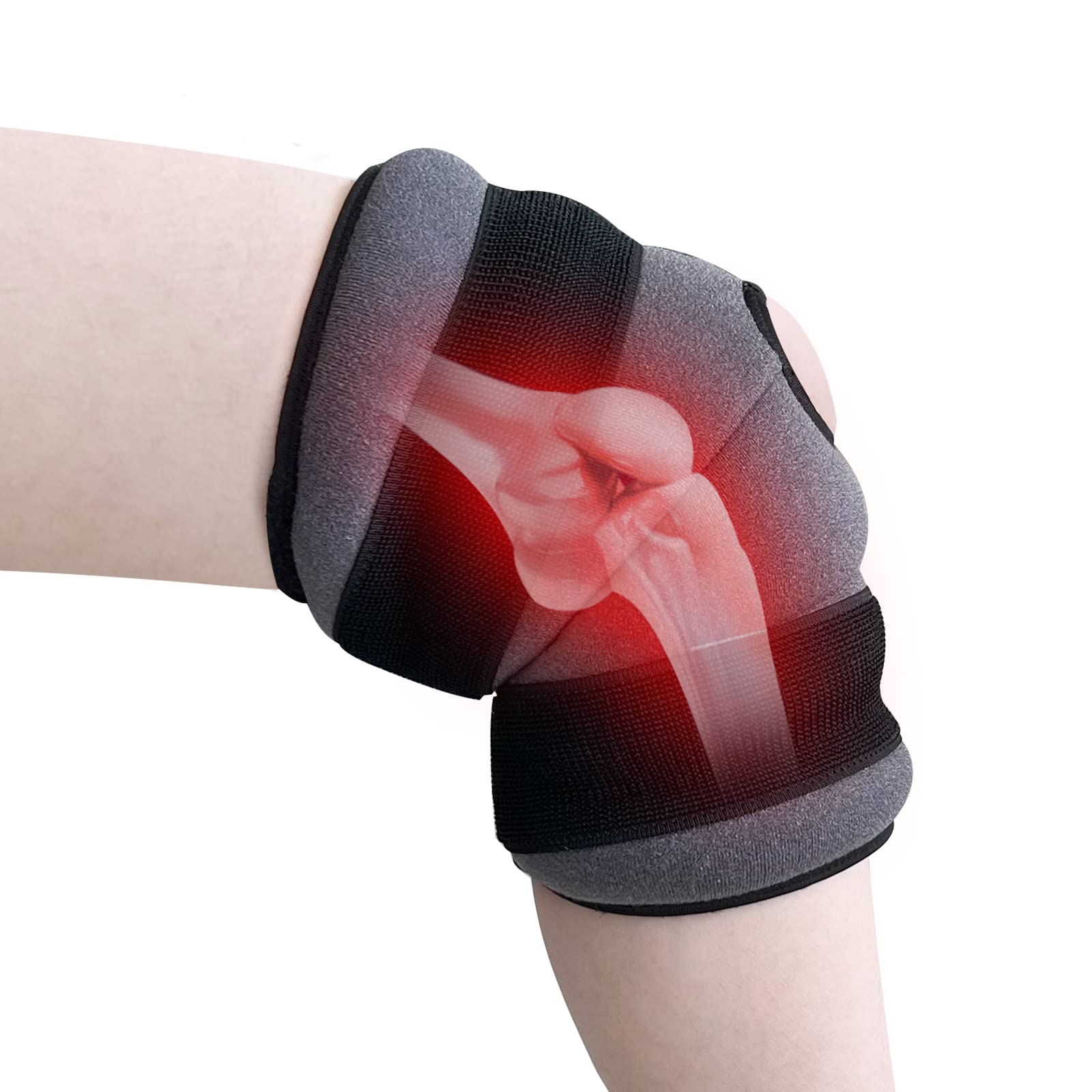
Diagnostic Techniques
What methods are used to diagnose knee injuries? Common diagnostic approaches include:
- Physical examination
- Patient history and symptom assessment
- Imaging studies (X-rays, MRI, CT scans)
- Specialized tests (e.g., arthroscopy for direct visualization)
Treatment Options
Treatment strategies vary depending on the specific injury and its severity. Options may include:
- Conservative measures (rest, ice, compression, elevation)
- Physical therapy and rehabilitation
- Medications for pain and inflammation
- Bracing or supportive devices
- Injections (e.g., corticosteroids, hyaluronic acid)
- Surgical interventions (arthroscopy, ligament reconstruction, joint replacement)
Rehabilitation and Return to Activity
How is the rehabilitation process structured? Key components often include:
- Progressive strengthening exercises
- Range of motion and flexibility training
- Proprioception and balance exercises
- Sport-specific or activity-specific training
- Gradual return-to-play protocols
The duration and intensity of rehabilitation vary based on the injury type and individual factors. Close collaboration between the patient, healthcare providers, and rehabilitation specialists is essential for achieving optimal outcomes and minimizing the risk of re-injury.
:max_bytes(150000):strip_icc()/GettyImages-183817553-56966d2e5f9b58eba49dbaf1.jpg)
Prevention Strategies: Safeguarding Your Knees
While not all knee injuries can be prevented, adopting certain strategies can significantly reduce the risk of injury and promote long-term knee health.
Strengthening and Conditioning
How can you build resilience in your knees? Focus on:
- Quadriceps strengthening exercises
- Hamstring and calf muscle exercises
- Core stability training
- Balance and proprioception exercises
Proper Technique and Equipment
Ensuring correct form and using appropriate gear is crucial:
- Learn and maintain proper technique for sports and activities
- Use well-fitting, activity-appropriate footwear
- Consider protective equipment when applicable (e.g., knee pads for certain sports)
Lifestyle Factors
What lifestyle choices can impact knee health? Consider:
- Maintaining a healthy body weight to reduce stress on the knees
- Staying hydrated to support joint health
- Consuming a balanced diet rich in nutrients that support joint function
- Getting adequate rest and recovery between activities
Regular Check-ups and Early Intervention
Proactive care can prevent minor issues from becoming major problems:

- Schedule regular check-ups with healthcare providers
- Address minor aches and pains promptly
- Seek professional guidance when starting new exercise programs
By implementing these preventive strategies and maintaining awareness of potential risk factors, individuals can take significant steps towards protecting their knees and maintaining optimal joint health throughout their lives.
5 Most Common Knee Injuries
The knee is the largest joint of the body, and is also one of the most commonly injured joints. Bones, cartilage, ligaments, and tendons work together to form your knee joint and allow you to bend your leg. Because of all the moving parts on the knee and the sensitive nature of the joint, it’s very prone to multiple types of injuries.
If you’re experiencing knee pain, it’s likely that you’re suffering from one of the most common knee injuries. We’ll help you understand the makeup of the knee, as well as how to identify the symptoms of a knee injury. However, only your orthopaedic doctor can determine what injury you’re dealing with.
Anatomy of the Knee
Within the knee joint are three bones: the femur (thighbone), the tibia (shin bone), and the patella (kneecap). These three bones meet to form the knee joint. Articular cartilage covers the ends of the femur and the tibia, as well as the back of the patella. The cartilage allows the bones of the knee joint to smoothly glide against one another as you bend or straighten your leg. The meniscus is a tough and rubbery wedge-shaped cartilage located between your femur and tibia. The meniscus cartilage cushions the joint and also acts as a shock-absorber between the femur and tibia bones.
The cartilage allows the bones of the knee joint to smoothly glide against one another as you bend or straighten your leg. The meniscus is a tough and rubbery wedge-shaped cartilage located between your femur and tibia. The meniscus cartilage cushions the joint and also acts as a shock-absorber between the femur and tibia bones.
There are four ligaments that connect the bones together and stabilize the knee joint. The medial collateral ligament is located on the inside of the knee, while the lateral ligament is on the outside. These ligaments control your knee joint as it moves sideways and stabilizes it and protects it from any unusual movement that may occur. The cruciate ligaments are within the knee joint and cross over each other to create an “X” shape. The anterior cruciate ligament is in the front of the knee joint and the posterior cruciate ligament is located behind it. These ligaments control the back and forth motion of the knee.
The tendons within your knee connect the muscles to the bones.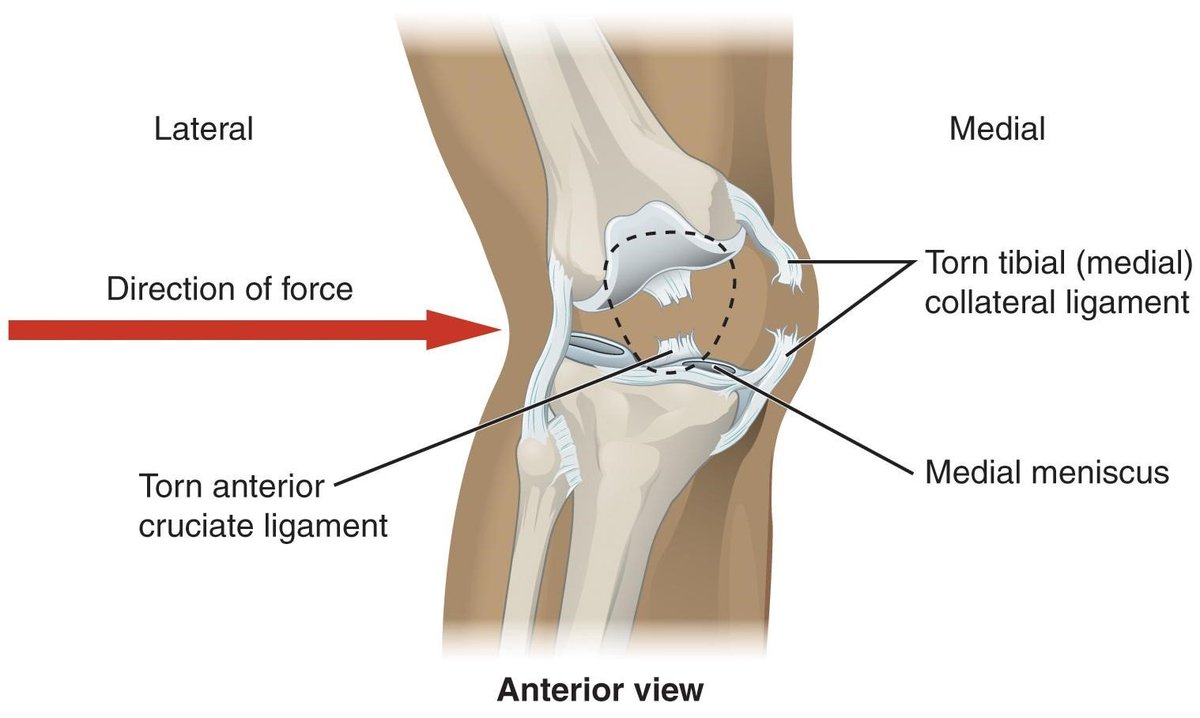 The quadriceps tendon is located in the front of your thigh and connects those muscles to the patella. The patellar tendon connects your patella to your shinbone.
The quadriceps tendon is located in the front of your thigh and connects those muscles to the patella. The patellar tendon connects your patella to your shinbone.
Knee Injuries
There are many different types of knee injuries that can occur, since there are several different parts that make up the knee. In some cases, more than one knee structure is affected and also injured. Below are the most common types of injuries.
1. Knee Fracture
Your patella, or your knee cap, protects your knee joints from injuries or further damage. When you fall or collide with an object or a person, your kneecap makes first contact and shields the different parts within your knee joint. This makes the kneecap susceptible to fractures.
Knee fractures are common but they’re also very serious. The knee must be immobilized to allow the bone to heal or sometimes needs surgery for repair.
2. Knee Dislocation
Knee Dislocation
A knee dislocation occurs when the knee bones come out of place. This can happen when there is a large impact to the knee, such as a fall, a collision, or a car accident.
In certain situations, the knee will correct itself. It will feel a little sore, but will function normally. If this doesn’t happen, the only way to recover from a dislocation is to relocate the knee bones back into place. A doctor will strategically adjust the bones back in place in what is usually a quick, fluid motion.
3. Knee Ligament Injury
Ligament injuries are extremely common in sports. They occur when the knee is overextended, or moved in a way it shouldn’t naturally move and the ligaments are unable to support the movement. Because the ligaments serve to keep the knee in place, if they’re forced too much, they aren’t able to do their job and they can stretch or tear.
The most commonly injured ligaments include the cruciate ligaments which make up the X – the anterior cruciate ligament (ACL) and the posterior cruciate ligament (PCL). The collateral ligaments – the medial collateral ligament (MCL) and the lateral collateral ligament (LCL) – are also commonly injured.
The collateral ligaments – the medial collateral ligament (MCL) and the lateral collateral ligament (LCL) – are also commonly injured.
Although ligament injuries are very common, there are varying degrees to how serious the injury is.
-
Grade I: In a Grade I ligament injury, the fibers have been slightly overstretched causing a ligament sprain. You won’t notice a lot of bruising, if any, and only minimal swelling. An example of this type of injury is an MCL sprain.
-
Grade II: This is when the ligament fibers are partially torn, but not all the way across. This will result in more pain and joint restriction than Grade I, as well as additional bruising and swelling.
-
Grade III: A Grade III injury is when the ligament is completely torn which involves severe pain initially. The knee and surrounding area will be very bruised and swollen.
 An example of this type of injury is an LCL tear.
An example of this type of injury is an LCL tear.
4. Meniscus Tear
Meniscus tears occur frequently during sports where jumping or twisting is involved, such as volleyball. Meniscus tears also are common in sports such as football or soccer, where athletes change direction quickly while running. Any type of knee twisting, cutting or pivoting can result in a torn meniscus. Sometimes the meniscus also tears from wearing out over time.
5. Knee Tendon Tear
Tendon tears can happen to anyone, but are especially common in middle-aged people who are running or engaging in jumping sports and other activities. Landing awkwardly after coming down from a jump is a common way to injure the tendon, as the tendon is unable to support the overextension.
Falls can also cause a stretched tendon due to the direct force to the front of the knee.
Knee Injury Signs and Symptoms
Two tell-tale signs of a knee injury are pain and swelling of the knee. You may also have difficulty with the joint moving. It may feel stiff, lock up, or feel like it’s catching as you bend and straighten your leg.
You may also have difficulty with the joint moving. It may feel stiff, lock up, or feel like it’s catching as you bend and straighten your leg.
If you hear your knee pop and then give out at the time of impact, it’s definitely a cause for concern. This popping sound could be the sound of something tearing. You may feel like you can’t stand firmly on your leg after a knee injury, since your ligaments are unstable. It may feel like your knee is giving way.
Knee Injury Treatment
If your knee pain is minimal, it’s possible you did not injure it and it’s just feeling a little sore from overexertion. You can typically treat this type of pain with the RICE (rest, ice, compression, elevation) method. If this method works for you and you’re feeling back to normal, you can avoid a doctor visit.
When experiencing a lot of pain, swelling, bruising and instability, it’s important to visit your doctor for treatment. Neglecting the problem could aggravate it, and turn a minor sprain into a tear.
One of the first steps of treating your knee injury is stabilizing the knee. Your doctor will likely recommend a brace to keep your knee joint from moving. This will allow bone fractures to heal properly. You may also be given crutches to prevent you from putting weight onto your injured leg.
Physical Therapy
Physical therapy will involve a program of several weeks of specific stretches and exercises to restore function of your knee joint. In addition, the exercises will strengthen the muscles surrounding the joint.
Surgical Treatment
You may need surgery to treat your knee injury in certain cases to fully restore its function, when physical therapy and other methods have not proven successful. Some injuries cannot heal on their own, such as a completely torn ligament, and they’ll need to be operated on. Many knee surgeries can be minimally invasive and performed arthroscopically using miniature tools and small incisions. In other cases, your surgeon will need to make a larger incision to repair the injury.
In other cases, your surgeon will need to make a larger incision to repair the injury.
Rothman Orthopaedics has many knee specialists that can help you determine what type of knee injury you’re dealing with and how you can find relief. Don’t wait to see an orthopaedic doctor to avoid further injury.
Knee pain Information | Mount Sinai
Pain – knee
Knee pain is a common symptom in people of all ages. It may start suddenly, often after an injury or exercise. Knee pain also may begin as a mild discomfort, then slowly get worse.
Leg pain in older children or young adolescents can occur for many reasons. An Osgood-Schlatter lesion results from continued trauma to the anterior tibial bone and causes a visible lump below the knee.
An Osgood-Schlatter lesion results from continued trauma to the anterior tibial bone and causes a visible lump below the knee.
The muscular components of the lower leg include the gastrocnemius, soleus, peroneus longus, tibialis anterior, extensor digitorum longus, and the Achilles tendon.
The location of knee pain can help identify the problem. Pain on the front of the knee can be due to bursitis, arthritis, or softening of the patella cartilage as in chondromalacia patella. Pain on the sides of the knee is commonly related to injuries to the collateral ligaments, arthritis, or tears to the meniscuses. Pain in the back of the knee can be caused by arthritis or cysts, known as Baker’s cysts. Baker’s cysts are an accumulation of joint fluid (synovial fluid) that forms behind the knee. Overall knee pain can be due to bursitis, arthritis, tears in the ligaments, osteoarthritis of the joint, or infection. Instability, or giving way, is also another common knee problem. Instability is usually associated with damage or problems with the meniscuses, collateral ligaments, or patella tracking.
Instability is usually associated with damage or problems with the meniscuses, collateral ligaments, or patella tracking.
A Baker cyst is seen as a swelling behind the knee. It forms when joint fluid collects behind the knee. The swelling may be due from inflammation or from other causes, like arthritis. The condition can be seen in both adults and children.
Tendinitis is inflammation, irritation, and swelling of a tendon, which is the fibrous structure that joins muscle to bone. Tendinitis pain in the knee is located in the front of the knee. The pain gets worse when going up and down stairs or inclines. Tendinitis knee pain can happen in runners, skiers, and cyclists.
Causes
Knee pain can have different causes. Being overweight puts you at greater risk for knee problems. Overusing your knee can trigger knee problems that cause pain. If you have a history of arthritis, it could also cause knee pain.
Here are some common causes of knee pain:
MEDICAL CONDITIONS
- Arthritis — Including rheumatoid arthritis, osteoarthritis, lupus, and gout
- Baker cyst — A fluid-filled swelling behind the knee that may occur with swelling (inflammation) from other causes, such as arthritis
- Cancers that either spread to your bones or begin in the bones
- Osgood-Schlatter disease
- Infection in the bones around the knee
- Infection in the knee joint
INJURIES AND OVERUSE
- Bursitis — Inflammation from repeated pressure on the knee, such as kneeling for a long time, overuse, or injury
- Tendinitis — Inflammation of the tendon with change in activities, can be related to overuse or deconditioned tissue
- Dislocation of the kneecap
- Fracture of the kneecap or other bones
- Iliotibial band syndrome — Injury to the thick band that runs from your hip to the outside of your knee
- Patellofemoral syndrome — Pain in the front of your knee around the kneecap
- Torn ligament.
 — An anterior cruciate ligament (ACL) injury, or medial collateral ligament (MCL) injury may cause bleeding into your knee, swelling, or an unstable knee
— An anterior cruciate ligament (ACL) injury, or medial collateral ligament (MCL) injury may cause bleeding into your knee, swelling, or an unstable knee - Torn cartilage (a meniscus tear) — Pain felt on the inside or outside of the knee joint
- Strain or sprain — Minor injuries to the ligaments caused by sudden or unnatural twisting
Home Care
Simple causes of knee pain often clear up on their own while you take steps to manage your symptoms. If knee pain is caused by an accident or injury, you should contact your health care provider.
If your knee pain has just started and is not severe, you can:
- Rest and avoid activities that cause pain.
 Avoid putting weight on your knee.
Avoid putting weight on your knee. - Apply ice. First, apply it every hour for up to 15 minutes. After the first day, apply it at least 4 times per day. Cover your knee with a towel before applying ice. Do not fall asleep while using ice. You can leave it on too long and get frostbite.
- Keep your knee raised as much as possible to bring down any swelling.
- Wear an elastic bandage or elastic sleeve, which you can buy at most pharmacies. This may reduce swelling and provide support.
- Take ibuprofen (Motrin) or naproxen (Aleve) for pain and swelling. Acetaminophen (Tylenol) can help relieve pain, but not swelling. Talk to your provider before taking these medicines if you have medical problems, or if you have taken them for more than a day or two.
- Sleep with a pillow underneath or between your knees.
Follow these general tips to help relieve and prevent knee pain:
- Always warm up before exercising and cool down after exercising. Stretch the muscles in the front of your thigh (quadriceps) and in the back of your thigh (hamstrings).

- Avoid running down hills — walk down instead.
- Bicycle, or better yet, swim instead of run.
- Reduce the amount of exercise you do.
- Run on a smooth, soft surface, such as a track, instead of on cement or pavement.
- Lose weight if you are overweight. Every pound (0.5 kilogram) that you are overweight puts about 5 extra pounds (2.25 kilograms) of pressure on your kneecap when you go up and down stairs. The amount of extra pressure is even greater when you jump. Ask your provider for help losing weight.
- If you have flat feet, try special shoe inserts and arch supports (orthotics).
- Make sure your running shoes are well made, fit well, and have good cushioning.
Further steps for you to take may depend on the cause of your knee pain.
When to Contact a Medical Professional
Contact your provider if:
- You cannot bear weight on your knee.

- You have severe pain, even when not bearing weight.
- Your knee buckles, clicks, or locks.
- Your knee is deformed or misshapen.
- You cannot flex your knee or have trouble straightening it all the way out.
- You have a fever, redness or warmth around the knee, or a lot of swelling.
- You have pain, swelling, numbness, tingling, or bluish discoloration in the calf below the sore knee.
- You still have pain after 3 days of home treatment.
What to Expect at Your Office Visit
Your provider will perform a physical exam, to include your knees, hips, legs, and other joints.
Your provider may do the following tests:
- X-ray of the knee
- MRI of the knee if a ligament or meniscus tear could be the cause
- CT scan of the knee
- Joint fluid culture (fluid taken from the knee and examined under a microscope)
Your provider may inject a steroid into your knee to reduce pain and inflammation.
You may need to learn stretching and strengthening exercises. You also may need to see a podiatrist to be fitted for orthotics.
In some cases, you may need surgery.
Cheung EC, McAllister DR, Petrigliano FA. Anterior cruciate ligament injuries. In: Miller MD, Thompson SR, eds. DeLee, Drez, & Miller’s Orthopaedic Sports Medicine. 5th ed. Philadelphia, PA: Elsevier; 2020:chap 98.
Huddleston JI, Goodman S. Hip and knee pain. In: Firestein GS, Budd RC, Gabriel SE, Koretzky GA, McInnes IB, O’Dell JR, eds. Firestein & Kelley’s Textbook of Rheumatology. 11th ed. Philadelphia, PA: Elsevier; 2021:chap 51.
McCarthy M, Mcarty EC, Frank RM. Patellofemoral pain. In: Miller MD, Thompson SR, eds. DeLee, Drez, & Miller’s Orthopaedic Sports Medicine. 5th ed.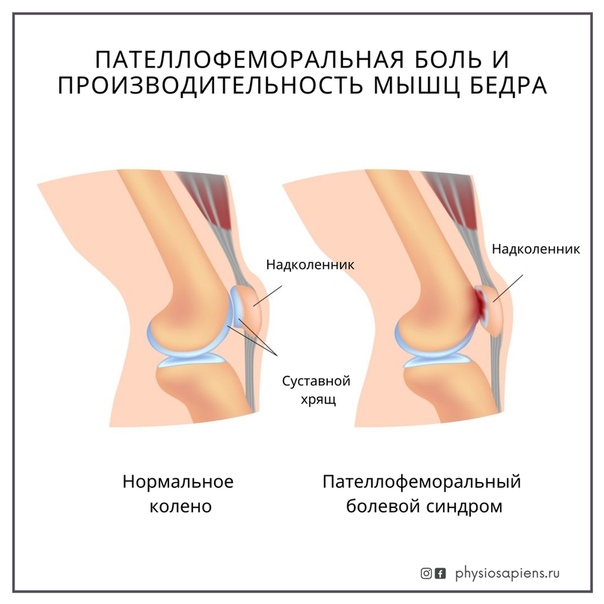 Philadelphia, PA: Elsevier; 2020:chap 106.
Philadelphia, PA: Elsevier; 2020:chap 106.
Last reviewed on: 12/12/2022
Reviewed by: C. Benjamin Ma, MD, Professor, Chief, Sports Medicine and Shoulder Service, UCSF Department of Orthopaedic Surgery, San Francisco, CA. Also reviewed by David C. Dugdale, MD, Medical Director, Brenda Conaway, Editorial Director, and the A.D.A.M. Editorial team.
Knee injury – symptoms, causes, treatment
This disease is treated by a neurologist.
Make an appointment
Share:
A knee injury is a lesion of soft tissues and bones in the area of the knee joint: bruise, bone fracture, sprain, or other violation. Diagnosis is essential for drawing up an actual treatment plan. Consider the current types of examinations, effective methods of treatment and rehabilitation.
CMDT specialist tells
Kuchenkov A.V.
Orthopedist • Traumatologist • Surgeon • Phlebologist • Sports doctor • 25 years of experience
Publication date: July 19, 2022
Verification date: February 19, 2023
All facts have been verified by a doctor.
Contents of the article
Causes of knee injury
Symptoms of knee injury
Types of knee injury
How to diagnose
The doctor asks the patient about the circumstances of the injury and the symptoms. Visual inspection and palpation reveal typical manifestations of certain types of pathology. To make a final diagnosis, specialists conduct functional and instrumental diagnostics:
- radiography
- ultrasonography (ultrasound)
- magnetic resonance imaging
- arthroscopy
MRI is the imaging modality of choice for facilitating assessment of bone and soft tissue conditions. In CMRT clinics, experienced doctors examine the images obtained using tomography to make an accurate diagnosis.
Which doctor to contact
An injury to the knee joint requires an orthopedist-traumatologist. With concomitant injuries, the patient needs to consult a surgeon.
Treatment of a knee injury in CMRT clinics
Experienced orthopedists of CMRT clinics select an effective treatment regimen based on the results of the examination. Conservative treatment is acceptable with minor damage to soft tissues, damage to the ligaments. The doctor immobilizes the limb to eliminate the load, applies a cold compress. Physiotherapy procedures relieve pain and prevent the development of the inflammatory process. When the ligaments are torn, the orthopedist applies a cast for several weeks. In case of serious fractures, the doctor restores the integrity of the tissues with the help of skeletal traction, surgery.
Additional treatments and recovery:
- connection of bone fragments with orthopedic constructions (osteosynthesis)
- removal of part of the meniscus or suturing it in case of severe damage
- use of painkillers and anti-inflammatory drugs
- exercise therapy and massage to relieve symptoms and restore movement during rehabilitation
Self-medication is not allowed. Only a qualified orthopedist can draw up the correct treatment regimen.
Only a qualified orthopedist can draw up the correct treatment regimen.
Sequelae of injury to the knee
Did you like the article?
Subscribe so you don’t miss the next one and get a unique gift from CMDT.
By clicking on the button, I accept the agreement for the processing of my data.
Article checked
Moskaleva V.V.
Editor • Journalist • Experience 10 years
We publish only verified information
medical education and specialists of the company CMRT
Read more
round-the-clock appointment by ph.
+7 (812) 748-59-05
Sign up for diagnostics
Personal Area
Sign up at CMRT
Need a preliminary consultation? Leave your details, we will call you back and answer all
questions
The information on the site is for guidance only, please consult your doctor
Callback request
Your name
Phone
By clicking on the button, I accept the agreement for the processing of my data
Enroll
Your name
Phone
By clicking on the button, I accept the agreement for the processing of my data
Enroll
By clicking on the button, I accept the agreement for the processing of my data
Ask a question to a specialist
Your name
Phone
Your question
Send a reply to e-mail
Publish anonymously
By clicking on the button, I accept the agreement for the processing of my data. Your question may be posted on the site.
Your question may be posted on the site.
Your application has been sent,
our operator will call you back
first aid, treatment methods, types, reasons, what to do
The knee joint is one of the largest and most complex in the human body. At the same time, this is a very fragile joint, which, in terms of the frequency of injuries, is comparable only to the ankle joint. This is due to the high stress that the knee bears when walking, cycling and skiing or playing football, as it carries the weight of the entire body as it moves. A knee injury is the most common reason people see a doctor. In case of minor injuries, conservative treatment is carried out, however, there are injuries when a surgical operation is necessary for recovery, followed by rehabilitation.
Content:
- Causes of knee injuries
- What are knee injuries: the most common cases
- knee fracture
- Dislocation of the knee
- Knee injury
- meniscus injury
- tendon rupture
- Knee sprain
- Tendinitis
- Risk Factors Leading to Knee Injury
- First aid for knee injuries
- Treatment of knee injuries
- Exercises to develop the knee joint after injury
Causes of knee injuries
Most often, athletes have knee injuries, but the knee joint can be easily damaged even in everyday life. The main causes of domestic injuries are:
The main causes of domestic injuries are:
- fall from a height;
- sharp extension and flexion of the knee;
- high jump landing on a straight leg;
- hit with a hard object in the knee joint;
- excessive twisting of the leg and thigh in opposite directions.
In addition, knee injury can occur in people who suffer from diseases that weaken the knee joint: arthrosis and arthritis, osteomyelitis, osteoporosis, inflammation of bone tissue caused by impaired collagen synthesis, vitamin and mineral deficiencies, and other pathologies.
To make an appointment, leave your phone number
What are knee injuries: the most common cases
Athletes and people whose work is associated with increased physical exertion should be aware of what knee injuries can be. The most common injuries are: contusion, dislocation, sprain and rupture of the medial or lateral ligament, fractures of the patella and bones (external and internal), violation of the integrity of the meniscus.
Important!
Any damage to the knee joint causes similar pain, therefore, to clarify the diagnosis, it is necessary to contact a traumatologist, who, using X-ray examination or CT, will accurately determine what kind of injury the patient has experienced.
Knee Fracture
Any bone in the knee joint can break in a fall, accident, or impact with a hard object, but the kneecap is usually fractured. It is accompanied by severe pain, swelling, hemorrhage into the joint cavity due to rupture of blood vessels, and the inability to raise a straight leg. The diagnosis is confirmed by X-ray examination. In case of a fracture with a displacement of the bone, surgical intervention is indicated, during which the fragments are pulled together and connected to each other using plates and screws. If the fragments are in an anatomical position, it is recommended to wear an orthopedic fixator that holds the joint in the desired position, and to perform physiotherapy.
Dislocation of the knee
Dislocation of the knee is a serious injury in which one or more bones are displaced from their anatomical position. Causes include a sudden change of direction during a fall, an accident, a sharp knee rotation due to mechanical force. In many cases, the dislocation is painful, but is easily reduced by a traumatologist, followed by splinting. If, as a result of an injury, blood vessels and nerve fibers in the articulation area are damaged, there is a risk of developing ischemic complications. In this case, surgical treatment is necessary.
Knee contusion
Knee contusion is a traumatic injury resulting from a fall, a blow with a blunt object or a sharp rotation of the torso on a fixed foot, which occurred without compromising the integrity of the articulation structures. When bruised, the skin, subcutaneous tissue, and all intra-articular elements suffer. With a mild injury, capillary rupture does not occur, due to reflex spasm and vasodilation, edema and hematomas are observed. With a strong bruise, there is pain, severe hemorrhage, the affected tissues are saturated with blood. When it enters the articular cavity, hemarthrosis or synovitis is diagnosed.
With a strong bruise, there is pain, severe hemorrhage, the affected tissues are saturated with blood. When it enters the articular cavity, hemarthrosis or synovitis is diagnosed.
Meniscus injury
The meniscus is a fibrous cartilage that acts as a shock absorber in the knee joint during movement. Injury to the meniscus of the knee joint is most often found in athletes, ballet dancers, people performing heavy physical work. If the meniscus is damaged, it is impossible to bend and straighten the leg, there are difficulties with climbing and descending stairs. Symptoms are characteristic clicks, pain, swelling, limited movement. When X-ray diagnostics and MRI in the joint, an accumulation of fluid is detected. When the cartilage is displaced, the orthopedist inserts them into place and applies a cast or splint. For small tears, arthroscopy of the knee joint is performed to relieve swelling, remove fluid and restore mobility. With extensive tears, an operation is performed to remove the meniscus.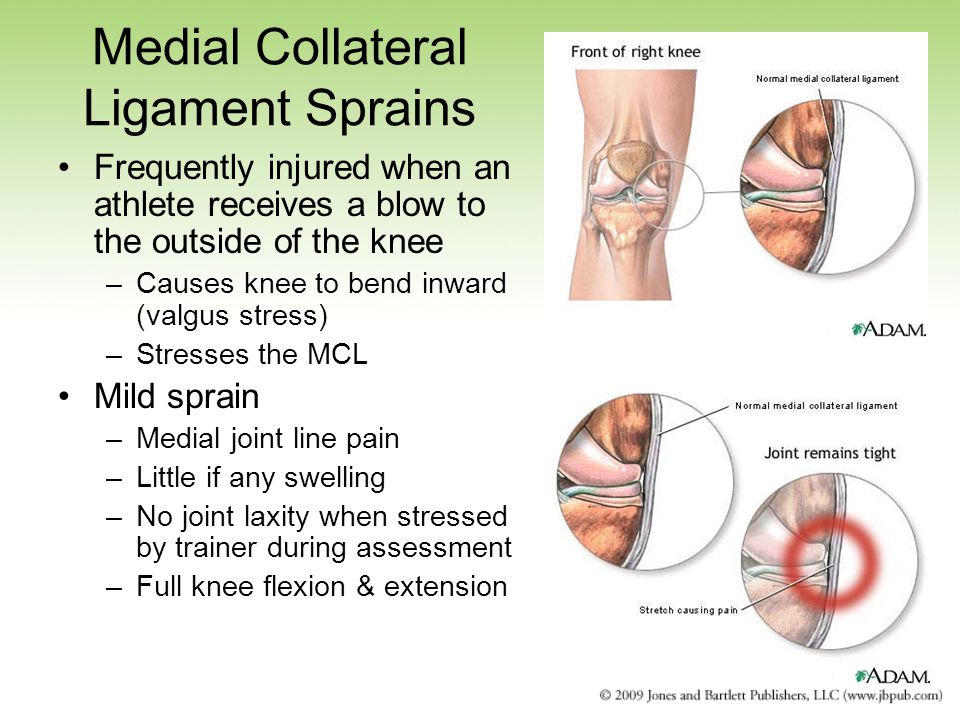
Tendon Rupture
Tendon joints are located under the knee and are responsible for flexion and extension of the hip, keeping the body in an upright position when walking. Injuries are provoked by active sports, open fractures, knee injuries with sharp objects, improper load distribution, and age-related tissue degeneration. The main symptoms are intense pain in the knee and gait disturbance caused by difficulty bending the leg while walking. If you have difficulty lifting the straight leg, you should contact a traumatologist or orthopedist to do an x-ray examination and an MRI. If the rupture is confirmed, the patient will need surgery followed by a cast on the knee.
Sprain of the knee ligaments
Injuries of the ligaments of the knee joint are formed when the lower leg is twisted outward or inward, with direct blows, falls from a height, road accidents, and other multicomponent effects. At the time of injury, the victim feels a click and sharp pain. The mobility of the lower leg is impaired, swelling and hematomas may form, lameness, signs of joint instability may appear.
The mobility of the lower leg is impaired, swelling and hematomas may form, lameness, signs of joint instability may appear.
Diagnosis of fresh injuries is carried out under local anesthesia, x-rays are prescribed to exclude a fracture, MRI for layer-by-layer examination of ligaments, cartilage and tendons, ultrasound to determine the volume of synovial fluid. The leg is fixed with an elastic bandage, in difficult cases arthroscopy of the knee joint is prescribed.
Tendinitis
Tendinitis of the knee is an inflammatory process that affects the patellar ligament. Inflammation is localized in the area of the tendon that connects the patella to the lower leg. The causes of the disease are microtrauma and constant overstrain of the tendon. The disease is most often diagnosed in athletes: athletes, football players, basketball players, tennis players. It is characterized by severe pain during extreme loads, as well as pain when pressing on the ligaments in a calm state. Predisposing factors are: foot pathology, wearing uncomfortable shoes, joint injuries, an ill-conceived training schedule, jumping on a hard surface, heavy weight.
Predisposing factors are: foot pathology, wearing uncomfortable shoes, joint injuries, an ill-conceived training schedule, jumping on a hard surface, heavy weight.
To make an appointment, leave your phone number
Risk factors for knee injury
Risk factors for various types of knee injury include:
- Being overweight. Increases the load on the articular joints during normal movements, destroys articular cartilage, increases the likelihood of developing arthritis and arthrosis.
- Weakness of the muscular system. Well-developed muscles hold and protect the joints from injury, increase the range of motion.
- Chronic injuries and inflammations. Poorly healed previous injuries to cartilage and bone tissue increase the risk of new injuries.
- Active sports activities. Increase the load on the knee joint and increase the risk of injury basketball, football, hockey, skiing, jogging.
First Aid for Knee Injuries
For those who play sports or work that involves heavy physical exertion, it is important to know how to determine which knee injury has occurred in order to provide first aid to the victim. This is a standard procedure that requires:
This is a standard procedure that requires:
- Provide peace. The person should be laid on a flat hard surface and slightly raise the injured leg by placing a pillow or roller under it.
- Put a splint or pressure elastic bandage on the leg (except for a broken joint) to fix it in a stationary horizontal position.
- Apply ice to the injury site for 2 to 3 hours. This will reduce pain and swelling.
- In case of severe pain, give the victim any pain medication.
- If there is an open fracture, stop the bleeding by applying a tourniquet to the leg above the injury, indicating the time. After an hour, the tourniquet must be loosened and shifted a little higher.
Important!
You can not independently set the joint in case of dislocation, touch the bone fragments in case of an open fracture or try to put them in place, warm up the knee within 48 hours after the injury, since there is a high risk of complications.
Treatment of knee injuries
Depending on the nature of the injury, knee injuries are treated in different ways. Minor injuries are treated with conservative methods: therapeutic exercises, physiotherapy, medication. The most serious injuries are knee meniscus injury, anterior cruciate ligament tear and knee fracture. The most effective and safe methods of treatment are used in the Department of Surgery of the Garvis Clinic:
- Metal osteosynthesis. It is performed with multi-comminuted, periarticular and intraarticular fractures of bones. During the operation, the traumatologist-orthopedist installs metal implants that allow you to match and hold the bone fragments in the correct anatomical position, which contributes to the rapid healing of the damaged bone.
- Arthroscopy of the knee. A minimally invasive operation, indications for which are both chronic injuries that occurred more than 1 month ago, as well as fresh meniscus injuries, synovitis and other pathologies.
 During arthroscopy, 2 small incisions are made, into one of which a special solution is introduced to wash the articular cavity, and into the other – an arthroscope with a microvideo camera. The doctor sees the image on the monitor and can perform the necessary manipulations. The advantage of arthroscopy is the absence of negative consequences after the procedure.
During arthroscopy, 2 small incisions are made, into one of which a special solution is introduced to wash the articular cavity, and into the other – an arthroscope with a microvideo camera. The doctor sees the image on the monitor and can perform the necessary manipulations. The advantage of arthroscopy is the absence of negative consequences after the procedure. - Knee replacement. A complex endoscopic operation, during which a damaged and worn joint is replaced with an artificial one. Endoprosthetics is performed in case of improper bone fusion and the ineffectiveness of conservative methods of treating arthrosis, bone tissue necrosis, rheumatoid arthritis, purulent inflammation of the joint and other diseases.
To make an appointment, leave your phone number
Exercises to develop the knee joint after injury
Very often people are wondering what to do to prevent knee injuries. The answer is simple enough. Massage of the knee joint after an injury and a set of exercises will help reduce the risk of re-injury and restore knee mobility:
- Sliding the heel on the floor.
 The exercise is performed in the supine position. The heel, without lifting off the floor, must be slowly moved to the buttocks and slowly returned to its original position.
The exercise is performed in the supine position. The heel, without lifting off the floor, must be slowly moved to the buttocks and slowly returned to its original position. - Flexion of the injured knee with the healthy leg. Suitable for early rehabilitation after injury. Exercise is done while sitting on a chair. Placing a healthy leg over the patient, they try to bend the damaged knee joint as much as possible.
- Knee flexion with belt. The patient sits on a chair and rests on a healthy leg. The ankle of the injured leg is secured with a strap that is wrapped around the leg of the chair, with the free end in the hand. It is necessary to pull the belt towards you so that the injured knee bends until pain appears in the thigh area.
- Knee extension with support. Sitting on a chair and focusing on a healthy leg, the foot of the diseased limb is placed on a chair or cabinet so that the injured knee remains on weight. To extend the leg, you can use various weights.


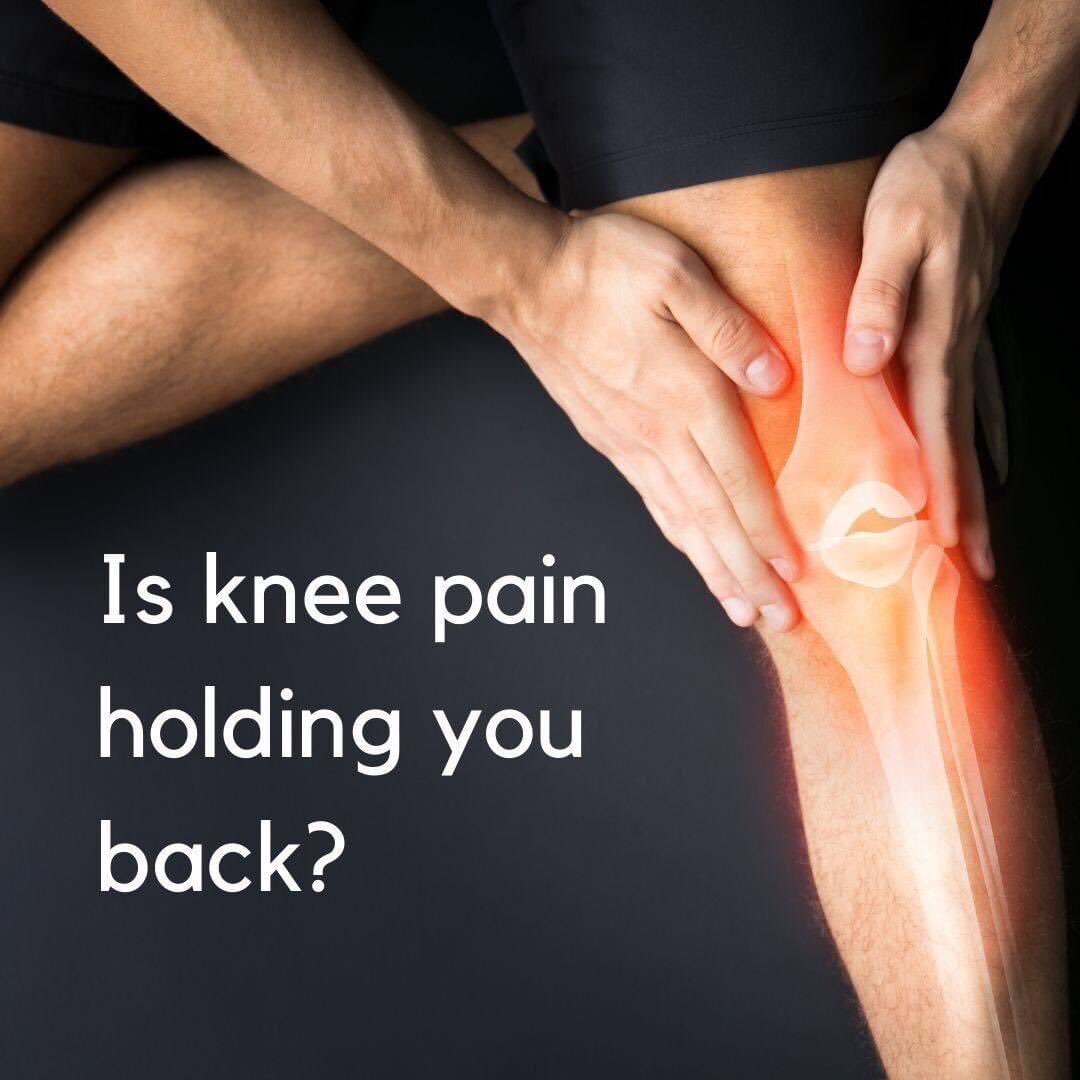 An example of this type of injury is an LCL tear.
An example of this type of injury is an LCL tear.  — An anterior cruciate ligament (ACL) injury, or medial collateral ligament (MCL) injury may cause bleeding into your knee, swelling, or an unstable knee
— An anterior cruciate ligament (ACL) injury, or medial collateral ligament (MCL) injury may cause bleeding into your knee, swelling, or an unstable knee Avoid putting weight on your knee.
Avoid putting weight on your knee.
:max_bytes(150000):strip_icc()/meniscusfinal-01-5c8fba21c9e77c00010e96f5.png)

 During arthroscopy, 2 small incisions are made, into one of which a special solution is introduced to wash the articular cavity, and into the other – an arthroscope with a microvideo camera. The doctor sees the image on the monitor and can perform the necessary manipulations. The advantage of arthroscopy is the absence of negative consequences after the procedure.
During arthroscopy, 2 small incisions are made, into one of which a special solution is introduced to wash the articular cavity, and into the other – an arthroscope with a microvideo camera. The doctor sees the image on the monitor and can perform the necessary manipulations. The advantage of arthroscopy is the absence of negative consequences after the procedure. The exercise is performed in the supine position. The heel, without lifting off the floor, must be slowly moved to the buttocks and slowly returned to its original position.
The exercise is performed in the supine position. The heel, without lifting off the floor, must be slowly moved to the buttocks and slowly returned to its original position.